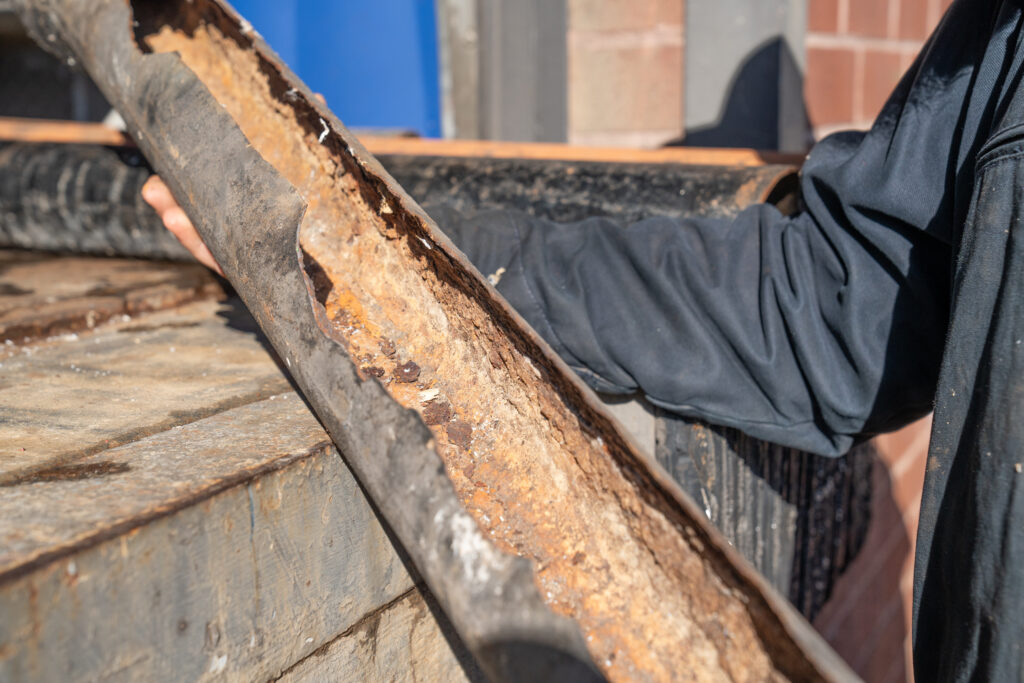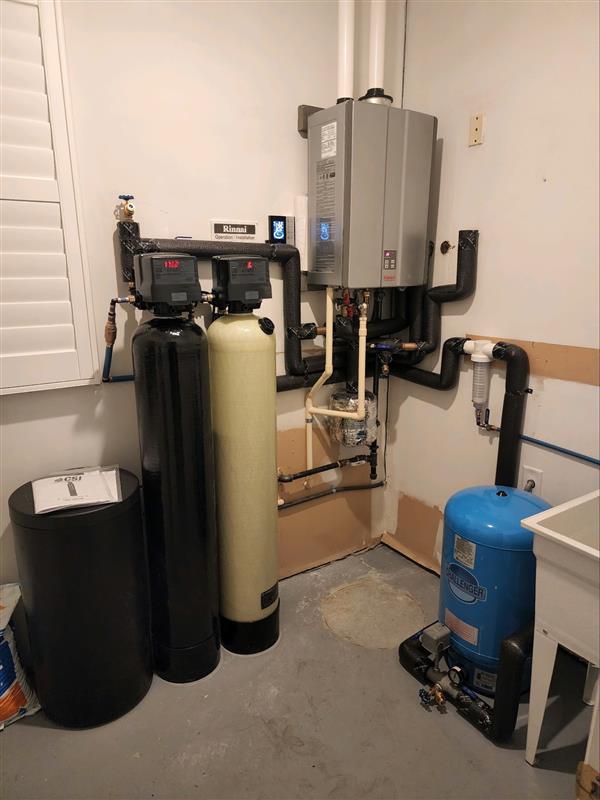Maybe you’ve been having trouble with leaky or noisy pipes, or maybe you’ve heard stories of pipes bursting and you wanna make sure it won’t happen to you. While no pipe is immune to leaks, some are far better than others!
Some pipes, like Polybutylene (PB) are no longer produced because they’re known for breaking and causing horrible damage to homes. Other pipes, like galvanized steel, can leach lead into your family’s water supply. When you have pipes installed in your home, you want something that’s gonna last and will provide your family with safe drinking water. That’s why Morris-Jenkins recommends PEX piping! But how do you know what pipes you currently have in your home?
@morrisjenkinsclt Ever wondered what those noises in your wall are? #plumbing #waterhammer #creepynoises #charlotte
♬ For movie / picture / action / suspense – G-axis sound music
How to Tell What Pipes Your Home Has
Whether you’re considering repiping your home proactively, or if you’re experiencing any kind of leaks right now, you might be curious what kind of pipes your home has. We’re gonna teach you about the types of pipes out there, what’s good or bad about them, and how to tell which one your home has!
PEX
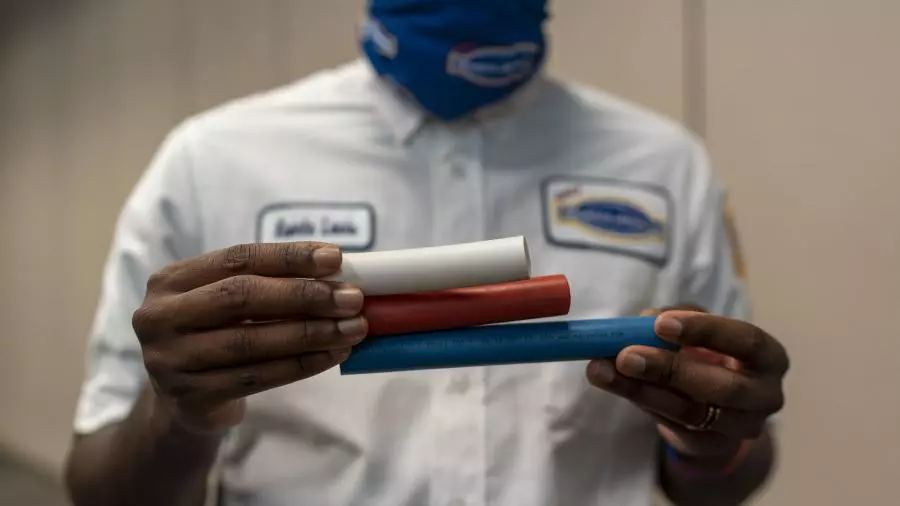
PEX pipes, or polyethylene cross-linked pipe, is our favorite pipe option for water supply lines! It’s affordable, and it’s plastic, which means it doesn’t leach lead or rust into your water. Unlike CPVC, PEX piping is flexible and not as prone to cracks. It’s also more resistant to freezing and to scale build-up than other pipes. Not only that, but we can install this type of pipe pretty quickly, making it ideal for getting your home’s plumbing in working order ASAP.
There are three types of PEX: PEX A, B, and C. C isn’t common. B is the cheaper and less durable option. We use PEX A because it’s kink resistant and more flexible. It also allows for better flow of water! Not only that, but we picked a manufacturer that’s been proven to be more UV resistant than any other PEX piping.
Recommended:“How to Prevent Shower Clogs”
What Do PEX Pipes Look Like?
PEX pipes are red, blue, white, or sometimes clear. We use red and blue so we can color code the hot and cold lines.
Dura PEX
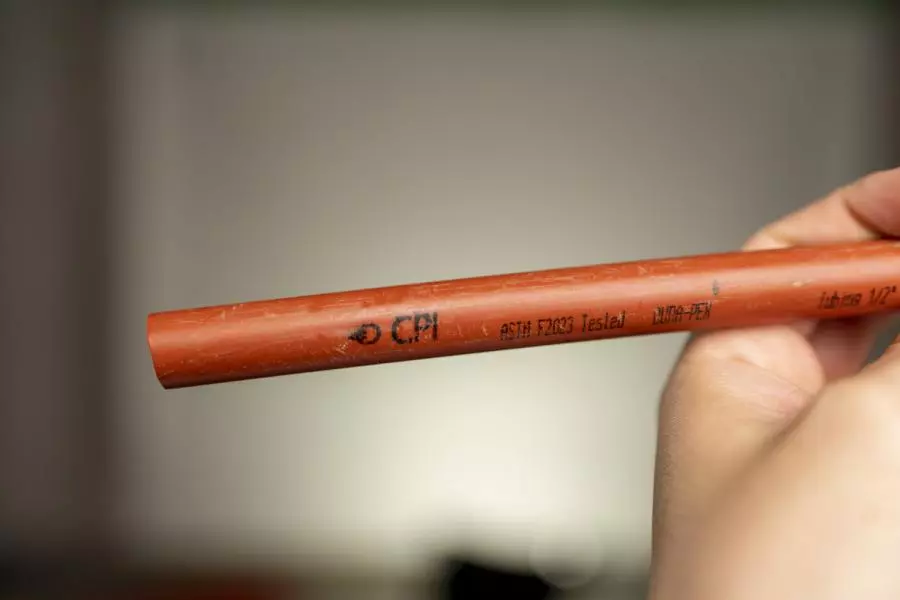
Dura PEX was popular from approximately 1999 to 2012. As homes built during this time start to age, a myriad of issues started to arise. Your water quality can directly affect how quickly problems appear! These pipes are easily damaged by chlorine, which is a problem when you use city water. More chlorine means problems will arise faster. The hot chlorine wears away at the material faster, but it can still affect other pipes in your home, leading to pinhole leaks. Even worse, Dura PEX shouldn’t be left out in the sun too long. UV light can damage it and weaken what little chlorine protection the pipes have and shorten their already short lifespan.
Recommended: “How to Prevent Plumbing Failure This Winter”
What Do Dura PEX Pipes Look Like?
Dura PEX piping is a red clay color (you might also describe it as “muddy brown” or “rusty red” colored). It’ll have either “Dura PEX,” “NIBCO” (a sister company that produces the same type of pipes), or “CPI” (the parent company of both) printed right on the pipes.
On rare occasions, Dura PEX could be other colors, such as white, but look for the logo to know for sure.
Polybutylene Pipes
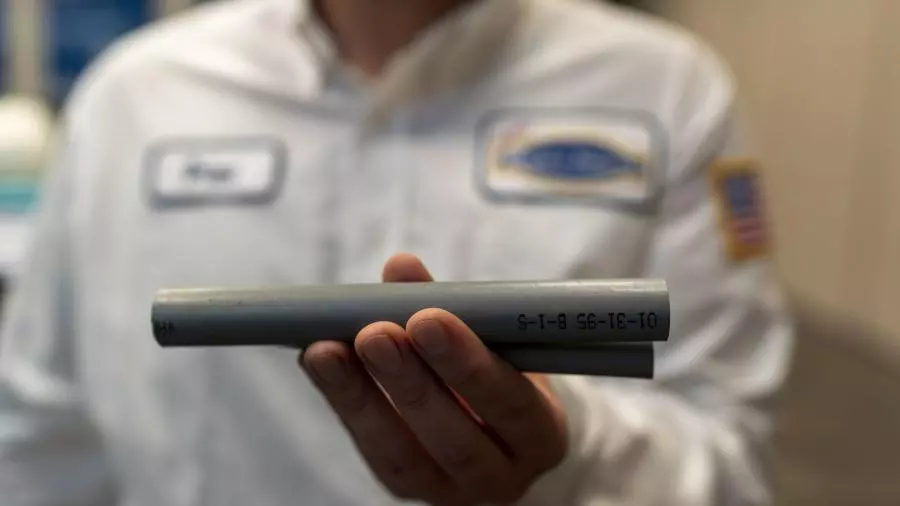
Production of polybutylene (or PB) pipes stopped in 1996 when allegations surfaced that claimed PB pipes were prone to breaking. In fact, in 1995, there was even a class action lawsuit against a major PB pipe producer! Unfortunately, PB pipes tend to deteriorate from the inside out, so it can be tricky to find problems until they’ve done catastrophic damage.
What Do Polybutylene (PB) Pipes Look Like?
Polybutylene was commonly used from around 1978 until 1995, so if your home was built during this time span, it’s more likely you have PB pipes in your home. It can also be identified by its color! Polybutylene pipes are grey and plastic.
Copper
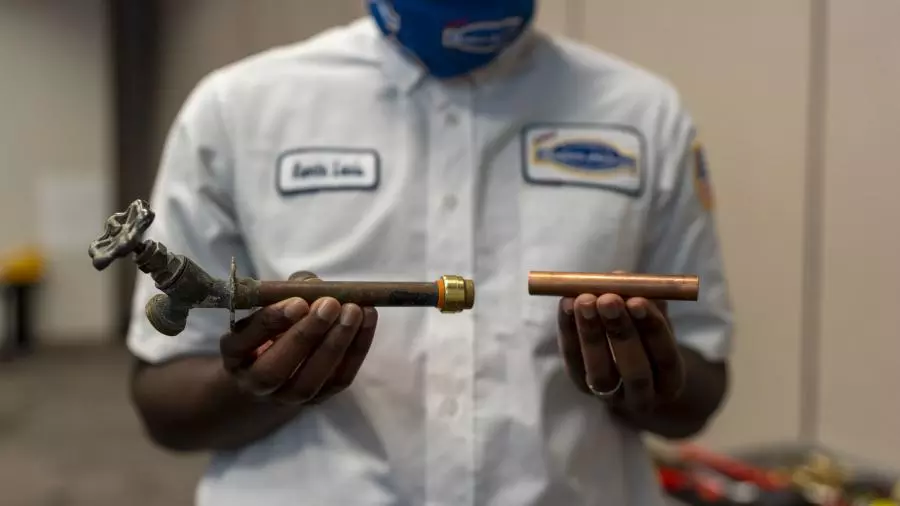
Copper pipes have been around for a long time, and you can find it in old and new homes. Not only that, but it’s resistant to corrosion, making it some peoples’ preferred type of piping. The downside to copper pipes is in the installation and material cost. Installing copper piping is labor intensive and can take much longer than other types of pipe to install.
Even though we typically use PEX piping, we do use copper to attach water lines to gas water heaters. This isn’t required by county code, and a lot of companies don’t do this. Why does Morris-Jenkins
do it then? Simple: We don’t take shortcuts! Copper pipe is more heat resistant and has been shown to be safer and more durable than other pipes when it comes to directly connecting water pipes to gas water heaters, and we want the best for families who trust us with their homes.
What Do Copper Pipes Look Like?
Fortunately, this one is a bit easier to tell. If your pipes are the same color as a penny and are metallic, you’ve got copper pipes! If only parts of your piping appear to be copper, it might just be that whoever installed your pipes used a different type of pipe with copper fittings.
While you’re looking at your copper pipes, check for blue/green staining around sink and shower drains. If you have poor water quality, the acidity can cause the metal to corrode, and this staining is a sign the metal is breaking down. If you have white calcium buildup like little stalactites, it means your pipe has corroded all the way through!
PVC & CPVC
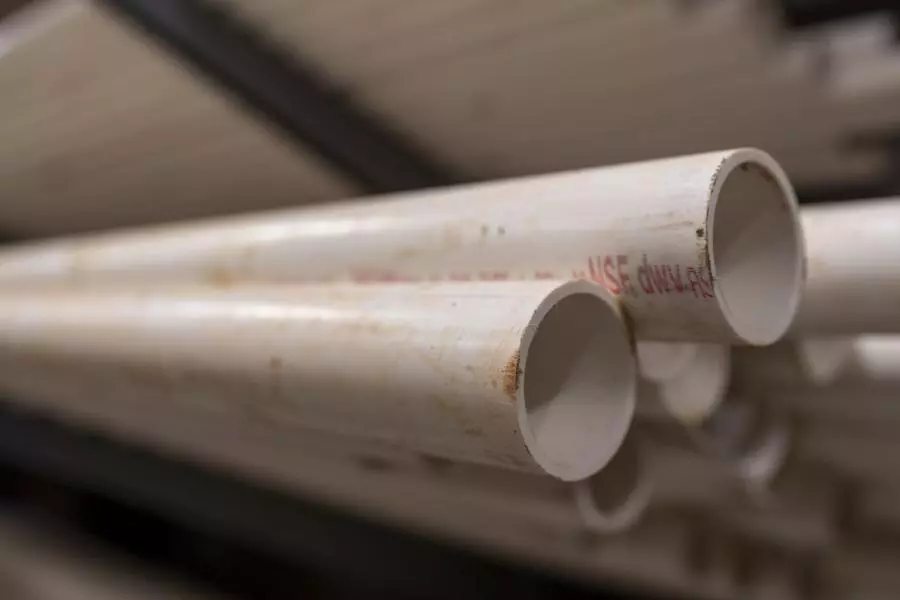
PVC is a thermoplastic, which means it softens when heated and hardens when cooled. This is why PVC pipes are actually only used for cold-water supply lines. They can tolerate temperatures up to 140 degrees Fahrenheit, but that means they can’t handle water hot enough for most peoples’ showers without degrading and breaking down. It’s fine for cold water supply lines, but if you have PVC in your home, it’s likely your hot water lines are actually CPVC, not PVC.
Recommended: “7 Common Plumbing Beliefs”
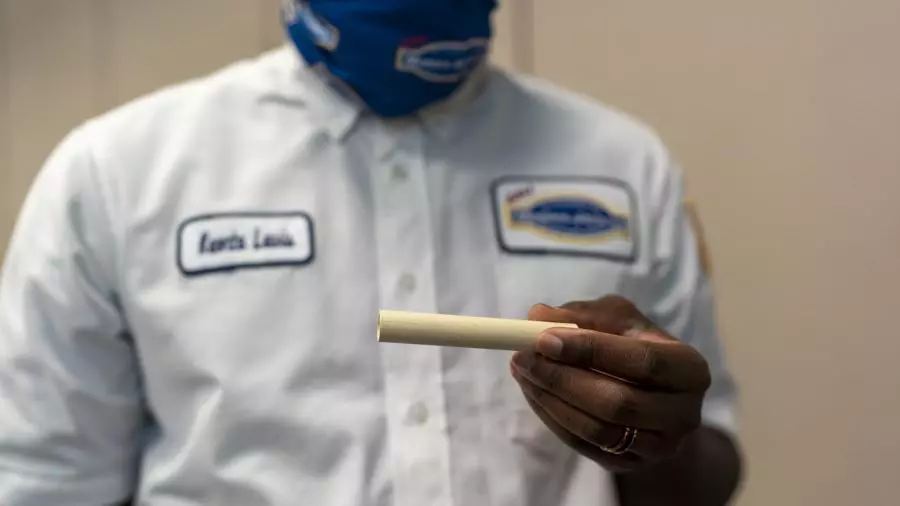
CPVC is an incredibly common type of piping found in homes today. Unfortunately, CPVC is notorious for cracking and breaking because it’s rigid and brittle. When you research this kind of piping, there are all sorts of sources that will tell you it’s perfectly fine to use CPVC because it’s considered “code.” The tricky thing is “code” doesn’t mean it’s ideal—it’s just the bare minimum. Out of most types of piping, CPVC has the shortest life expectancy.
What Do CPVC and PVC Pipes Look Like?
CPVC and PVC pipes look very similar! Both are rigid plastic, but PVC is more often white, while CPVC pipes are usually a cream/off-white color.
Galvanized Steel
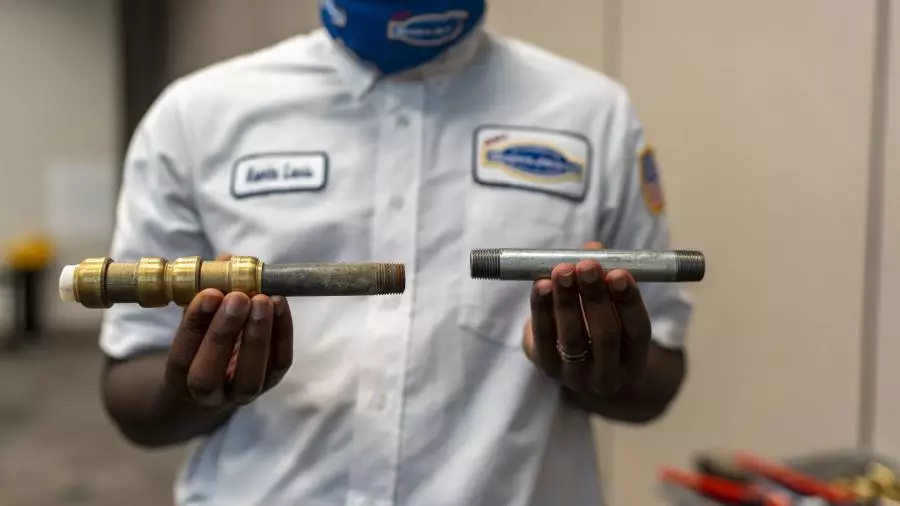
Galvanized piping is made of steel with an extra layer of zinc coating it. This extra layer of zinc protects the pipes against corrosion, but even the best galvanized pipes are still bound to lose their zinc coating over time. When this type of pipe corrodes, it leads to rust. Not only that, but unfortunately, a lot of galvanized steel pipes were coated in impure zinc, which means it could contain traces of lead. As the zinc layer breaks down over time, it can leach led into your family’s water supply. You don’t wanna drink or bathe in that!
What do Galvanized Steel Pipes Look Like?
Galvanized pipes were used before 1960 (they replaced lead pipes in the 1930s), so if your home was built before 1960, there’s a high chance it has galvanized steel pipes. You can also do a quick visual test to see if these are the type of pipes your home has. All you have to do is scratch the surface of one of your pipes so you can see the color underneath. If it’s greyish silver metal, it’s galvanized steel.
The Right Pipe for You
No matter if your home is old enough to have galvanized steel pipes, or new enough to have CPVC, Morris-Jenkins plumbers are trained and ready to help! No job is too big or small, whether it’s a small leak or a whole home repipe, we’ve got the materials and the know-how to make sure your home has the best pipes available. Some companies will install CPVC because it’s cheap, and they know full well that those pipes aren’t going to last very long. We think your home and your family deserve better! We don’t settle for any of the lesser quality pipes because you should be able to enjoy great plumbing for years to come.
For a consultation about a pipe repair or pipe installation, click the button below!




